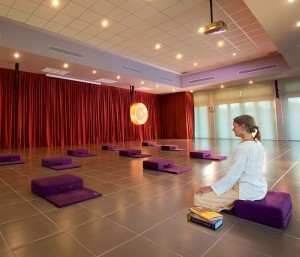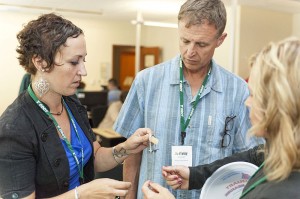This is the first of what I hope will be weekly blogs on meditation. These don’t aim to teach you meditation, but they do aim to support reflective practice amongst those who are already meditating. Outside of meditation classes, it’s surprising how seldom our experience of meditation is actually discussed amongst those who meditate. I hope that these can start discussion in which other people can also offer the benefit of their experience. I’m also open to the idea of others writing some of these blogs if they wish to do so.
One of the first questions you might get asked if you meet somebody new with whom you share an interest in meditation is “What practice do you do?”. The answers might range considerably, from Transcendental Meditation using a mantra, reflections on Jesus, visualising multi-limbed Tibetan deities garlanded with skulls, meditating on a candle flame, loving-kindness meditation, mindfulness of breathing, or ‘just sitting’ (zazen). There are not only a bewildering variety of meditational traditions, but even within, say, the Buddhist tradition, there are a huge variety of possible practices.
My own experience is primarily of the Buddhist practices taught in the Triratna movement: mindfulness of breathing, just sitting, loving-kindness meditation, and walking meditation. At various times during my long involvement in Triratna I also tried visualisation style practices, including the incredibly complex Going for Refuge Visualisation and Prostration practice and the sadhana (visualisation) of the blue Buddha Akshobhya. But I think I largely tried new practices in response to social pressure, and actually had very little interest in doing anything other than simple and basic forms of practice. The more complex and ‘religious’ the practice, the more conflicts I tended to find it created in me, leading me to focus on my reactions to the religious tradition rather than on the core business of integration. I think far too much emphasis is put in that movement on new forms of meditation as a mark of promotion in rank. 
So, my suggestion about choosing a practice is always to keep it simple. It might be possible to relate to highly ‘religious’ practices involving gods, Buddhas or mantras in an archetypal way without metaphysical commitments, but you need to have your attitudes to belief and meaning very well sorted (better than I did) to make that work. Simpler practices are also far more universal, and far more effective in the basic immediate business of integrating our wayward desires. Close your eyes and try to meditate and the chances are you will be off onto some distraction within a few minutes: I see it as the core business of meditation to start doing something about that.
On the other hand, it is possible to make it too simple. The zazen tradition involves just creating a basis of bodily awareness and then observing whatever comes up without judgement. This is a great practice if you can do it, but also very difficult. Even the Zen tradition also uses a mindfulness of breathing practice to supplement zazen, creating a bit more structure. My own habitual practice is about 60% mindfulness of breathing and 40% just sitting. I need to be in quite an integrated state to start with for just sitting to be productive. Mindfulness of breathing has the major advantage of giving some kind of structure, but nevertheless one that unavoidably takes one to one’s most basic physical experience. These are also the practices I intend to teach in the Middle Way Society practice classes.
There is a Buddhist tradition of matching meditation practices to character types. In Buddhaghosha’s ‘Path of Purification’ (a massive early Buddhist practice manual), people are classified into greed, hatred, and delusion types according to their dominant hindrances, and then advised to do meditation practices that correct these different tendencies. For example, hate types are (of course) advised to do the loving-kindness meditation. Greed types, on the other hand, are advised to meditate on decomposing corpses. The character typology here is crude compared to a modern character typology such as Myers-Briggs, but there is a certain sense to this basic approach of addressing your weaker points. However, there is also a pitfall – the very practices that might focus most on correcting your weaknesses will also be the ones you find hardest to engage with. Given how hard meditation is to keep going over the long-term, this is an important factor. As I’m more of a hate type than a greed type, Buddhaghosha would advise me to do lots of loving-kindness meditation, but that’s the very thing I would find hardest to keep going effectively (though I’ve certainly tried). Any meditation practice will to some extent help to integrate your neglected areas, and it seems more important to me to maintain one – and to enjoy it.
The other major issue with meditation practices, though, is that people tend to conceptualise them too much as distinct from each other, and reduce a practice too much to a set of rules. You do need a set of rules to hang onto when you first start meditating, to provide a structure by which to learn how to enter into that sphere of experience; but when you have a little more experience, it seems to me that meditation practices merge into one another. Instead of doing a specific practice, one is meditating – responding to whatever comes up with a toolbox of techniques. Thus I very often ad lib between focusing on the breath, focusing on the body, or open awareness, and occasionally might bring in some imagery. What ‘practice’ one does, and which tradition it comes from, is largely only a matter of concern when you are starting out. In the end what one is practising is just integration.
Picture: Meditation class by Thanyapura (Wikimedia Commons)

